On a bank high above a branch of the Earn and overlooking agricultural grazing land sits The Library of Innerpeffray. It is a Library of old books, open to the public and with a remarkable ethos of access before conservation. You have to travel along twisting roads, between Perth and Crieff, to get there …. but what a place!
The founding of the Library in the late 1600s by a local landowner is described at the Library’s web site [1]. The people – not just the gentry – could read and borrow books. That tradition continues.
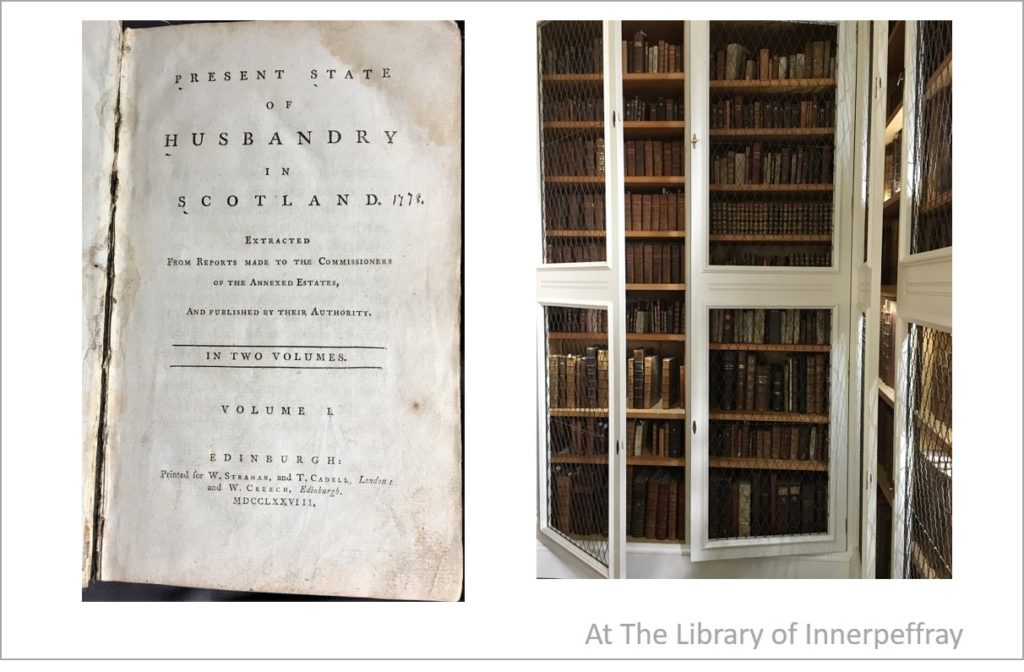
Andrew Wight’s travels published 1778-1784
The Living Field has often referred to The Current State of Agriculture in Scotland – anonymous but written by Wight – as a source of knowledgeable and first hand appraisal of the agricultural Improvements instigated by certain farmers and landowners [2]. And here it is on the shelves to be opened, the pages turned. Some sentences from the Preface, not by Wight, justify his years-long mission .
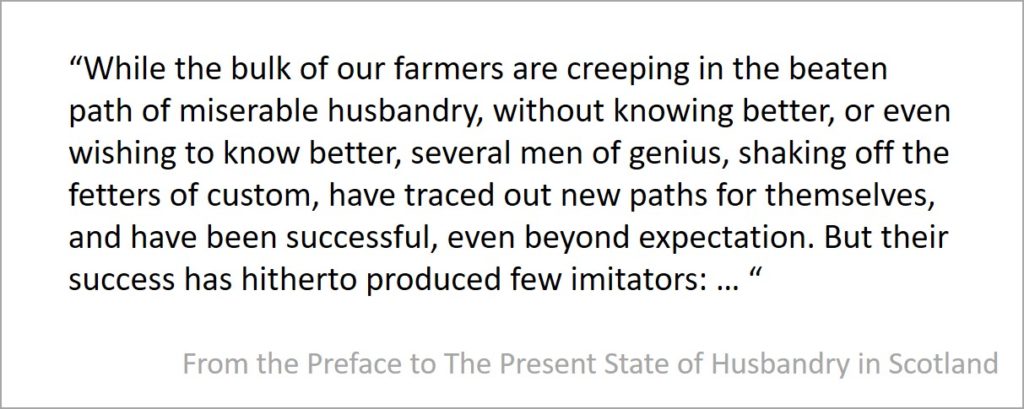
Improvements to land use and production had been made by some but not widely taken up. So in an age of slow communication between widely separated and sometimes isolated farming regions, there needed to be a means to share knowledge and good practice.
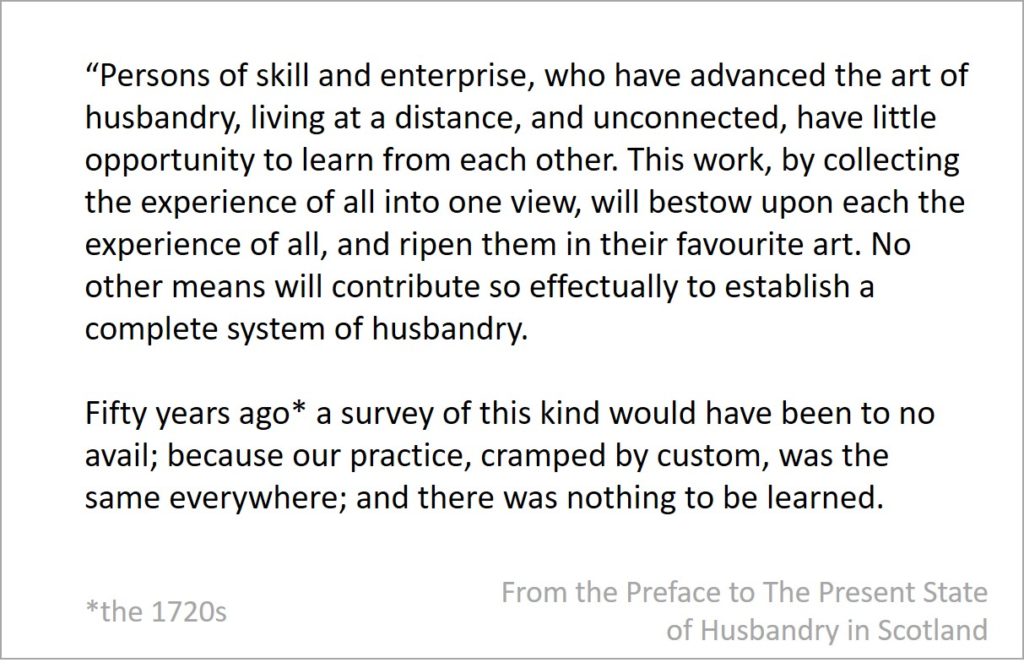
Quite possibly, the sentiments written above could apply to any age!
Mundified barlie, oates and Durer’s rhinoceros
L’Agriculture et Maison Rustique was published first in Italian, then in French and English [3]. The Library had copies of the latter two, the front page of the one examined dated 1593. It’s an early account of crops and their uses. On pages devoted to cereals, it explains how to mundify barley, to convert it to the consistency of papmeate and to add fruits and seeds for taste as available or desired [4].
Then on oats, the book refers to the property of oat seed to emerge in other crops (known today as ‘volunteer’ weeds).
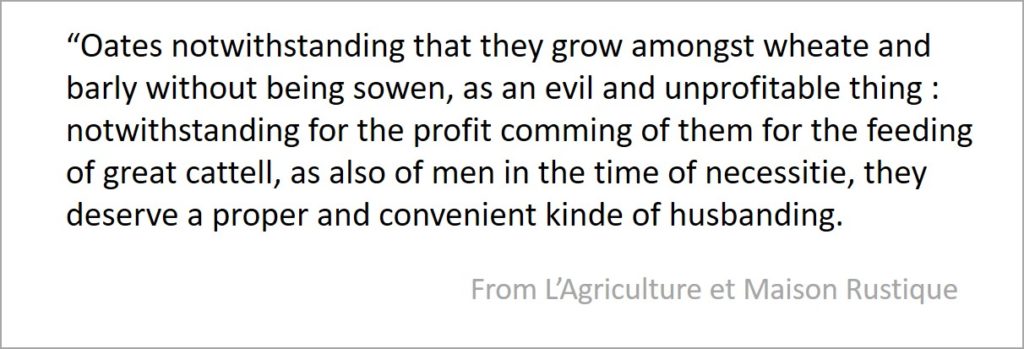
But which oats were they – possibly a more primitive variety such as black oat Avena strigosa, known by some in Britain as ‘famine food’? The writers then refer to the use of oatmeal boiled and enriched with meat into a porridge-like consistency.
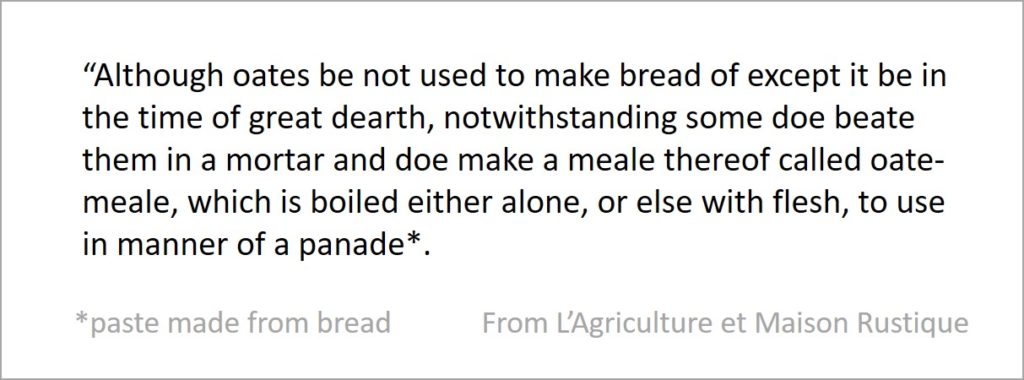
There is no end to the interest and fascination. The celebrated wood engravings of the rhinoceros by the artist Albrecht Durer [5] were there for visitors to see, unphotoshopped, the ink lettering coming through from the back of the page.
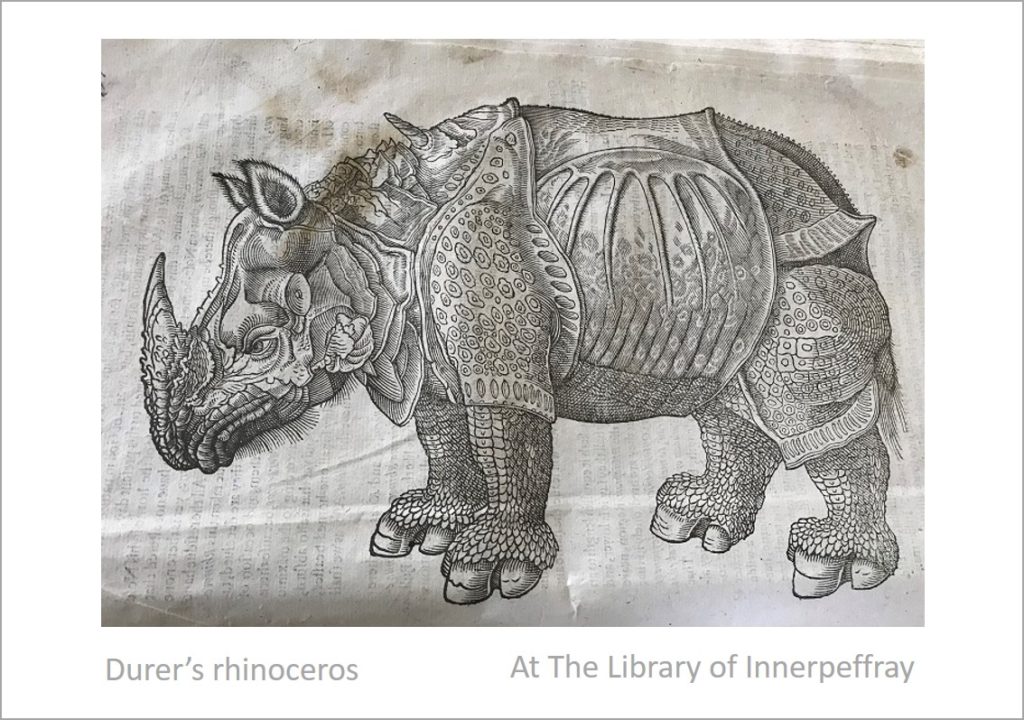
Sources
[1] The Library of Innerpeffray, by Crieff, Perthshire, Scotland. Web: The Library of Innerpeffray.
[2] Andrew Wight’s journals referenced by the Living Field: Great quantities of aquavitae, Great quantities of aquavitae II, The Mill at Atholl; and various articles in the Bere line – rhymes with hairline.
[3] L’Agriculture et Maison Rustique by C Estienne and J Liebault, various editions from the 1500s and 1600s in French and English available online, e.g. see Dumbarton Oaks or search the Biodiversity Heritage Library.
[4] Ready steady mundify – a short note on mundified barley this web site).
[5] Albrecht Durer (1471-1578), a German Renaissance artist, engraved an image of an Indian rhinoceros, which he had not seen directly but crafted from verbal descriptions and a drawing. There are several versions, the one above photographed from an book of unusual animals at The Library of Innerpeffray.
